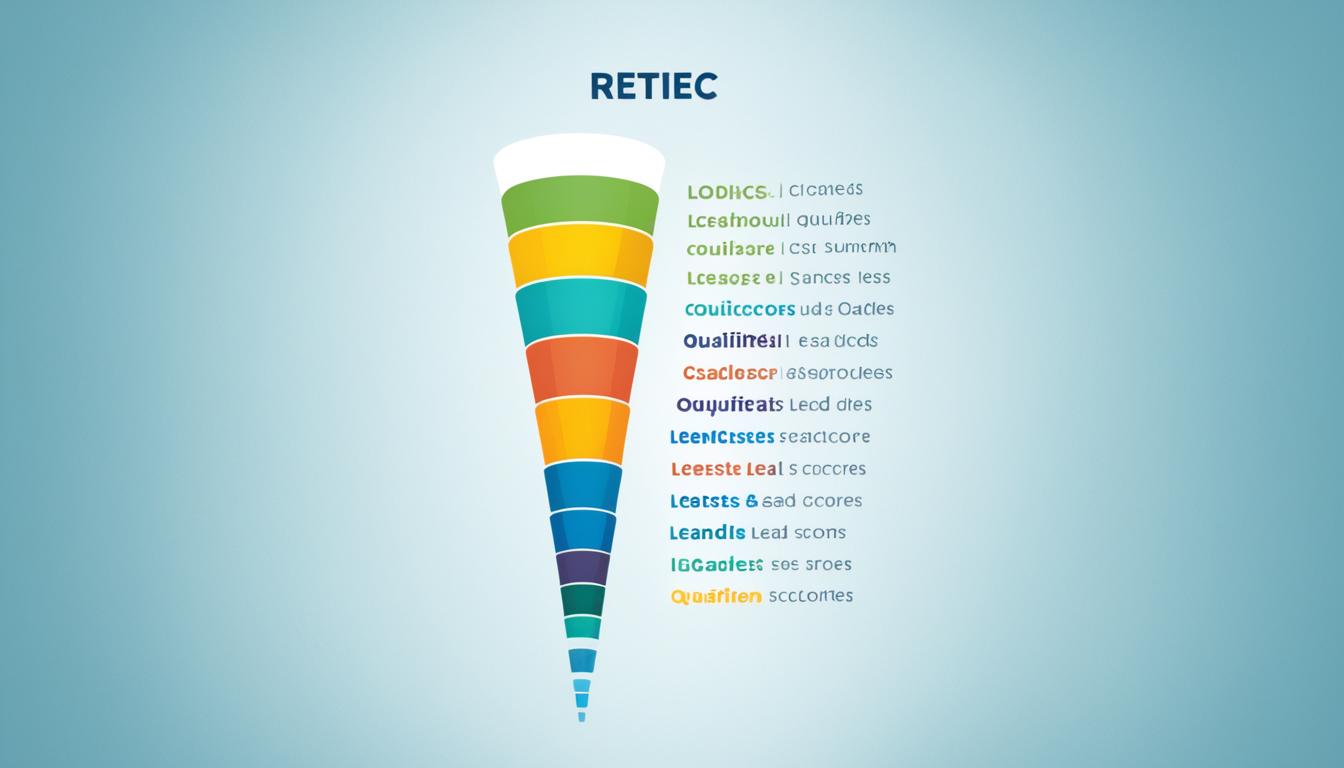Today’s businesses must be strategic to thrive. They need to focus on what consumers want and need. This strategy is called marketing orientation. It means businesses keep up with consumer preferences and trends. They use market research to adjust their products and services.
Marketing orientation is different from other strategies. Product orientation talks about a product’s features. Sales orientation is about making quick sales. Customer orientation puts great customer service first. But marketing orientation blends these elements. It puts customers’ desires and satisfaction central to decisions.
Companies like Amazon and Coca-Cola show what market orientation means. They invest in understanding what people want. They look at consumer behavior and check what the competition is doing. This way, they make products and services that people really want. This leads to happier customers, more loyalty, and growth.
In this article, we’ll go into more detail on marketing orientation. We’ll talk about its benefits and give real-world examples. You’ll learn how different approaches affect businesses. We’ll also discuss how you can use marketing orientation in your company.
What is Market Orientation?
Market orientation is a business strategy focusing on what consumers want and need. It involves taking those insights to shape new product development. This strategy values customer opinions highly in research and development.
Companies conduct detailed market research, like surveys, to understand what their customers want. This helps them to not just meet, but predict and fulfill customer wishes.
By tracking trends and listening to feedback, businesses can keep improving their products. Their main aim is to make customers happy by aligning products with what people want.
Having a market orientation approach means companies can quickly adapt to what customers expect. This understanding helps them foresee trends. It also allows them to tweak their offerings to better suit customer needs, giving them an edge over competitors.
| Benefits of Market Orientation | Components |
|---|---|
| Customer Satisfaction | Identifying consumer needs and fulfilling them |
| Competitive Advantage | Staying ahead by predicting market trends |
| Product Improvement | Analyzing trends and customer feedback for continuous enhancement |
| Profitability | Creating products that cater to consumer preferences |
Advantages of Market Orientation
Market orientation brings many benefits to businesses. It leads to better customer service and product support. This improves customer satisfaction and loyalty. Companies can tailor their products to fit what customers want.
Being market-oriented means solving customer problems well. Businesses that listen to feedback and solve issues quickly are loved by customers. This great service results in happy customers telling others, which brings in more business.
It’s also key for brand loyalty. When businesses meet customer expectations, trust grows. Happy customers stay loyal, leading to more sales and keeping customers for longer.
Market orientation helps businesses grow into new areas. It lets companies keep up with what customers want and find new opportunities. This way, businesses can reach more people and make more money.
Sometimes customer wants are hard or too expensive to meet. Businesses must find a balance between these wants and what’s good for them long-term. Making smart choices helps businesses stay adaptable and grow in a smart way.
Benefits of Market Orientation:
- Improved customer service and product support
- Increased customer satisfaction and loyalty
- Positive word-of-mouth advertising
- Enhanced brand loyalty
- Expansion into new demographics and markets
- Long-term customer retention
- Business growth and revenue generation
Market orientation helps businesses meet customer needs well. By focusing on making customers happy and adjusting to market changes, businesses can grow. They build strong brands and lasting customer relationships.
Market Orientation vs. Other Strategies
Businesses can choose from different strategies for their marketing. Two common methods are product orientation and sales orientation. But, market orientation stands apart by focusing on what consumers need and want. This strategy ensures products fit what people are looking for. It values customer satisfaction and being responsive to them more than other methods do.
Product Orientation
Product orientation is all about showing off a product’s features and benefits. It tries to make a product stand out by being different from others on the market. The goal is getting people to see the value of the product. This method stresses the importance of quality and new ideas to get ahead of the competition.
Sales Orientation
Sales orientation aims to get people to buy right away. It uses various methods to boost sales and make money. This approach looks to hit short-term sales goals and capture more of the market by selling aggressively. But, it might sacrifice building loyal customers for future business.
Even though product and sales orientations are useful, market orientation takes a fresh angle.It puts what consumers want first and makes products that meet those wants and needs. Responding to these demands helps businesses create lasting relationships with their customers. This builds loyalty to the brand.
Market orientation isn’t just about promoting and selling. It’s about digging into why consumers do what they do. It involves analyzing competitors and doing marketing research. This is done to understand customer preferences and trends better. As a result, businesses can offer products and services that truly meet consumer needs. This approach benefits the customer’s happiness and the brand’s reputation.
Placing market orientation at the heart of a marketing plan puts consumers first. It helps businesses stay flexible, beat their competitors, and grow over time. By blending market orientation with other strategies, companies can better cater to customer needs. This supports the company’s goals too.
Real World Examples of Market Orientation
Market-oriented companies focus on what consumers need and want. Amazon and Coca-Cola are great examples. They adapt their offerings to meet consumer demands.
Amazon
Amazon listens to consumers and makes changes based on what they say. They introduced Amazon Locker for an easy pick-up option. This service solves the issue of missing deliveries when not home. It allows customers to get their packages easily, making them happier with the service.
Coca-Cola
Coca-Cola pays attention to what drinks people like. They create new flavors to keep things interesting. They also buy other brands to offer more healthy options. This helps Coca-Cola stay relevant and liked by consumers.
| Examples of Market-Oriented Companies | Consumer Desires Addressed |
|---|---|
| Amazon | Convenient package delivery with Amazon Locker |
| Coca-Cola | Introduction of new flavors and acquisition of brands |
Understanding Marketing Orientation Approaches
Marketing orientation includes various strategies for meeting customer needs and making them happy. It can be split into five main types: production, product, sales, societal, and market orientations. Each type has unique traits and aims.
1. Production Orientation
Production orientation focuses on making the production process efficient and lowering costs based on what customers can afford. In this method, businesses work hard to streamline their operations. They aim to save money and achieve large-scale production to satisfy customer needs.
2. Product Orientation
Product orientation emphasizes creating top-quality products. Companies believe high-quality items will naturally attract buyers. They spend a lot on research and development. This is to make innovative products that people prefer.
3. Sales Orientation
Sales orientation is all about increasing sales with strong selling tactics. The main aim is to get customers to buy now. Businesses set sales goals and use promotions, discounts, and persuasive ads to raise sales.
4. Societal Orientation
Societal orientation looks at the effects of business on the environment and society. These companies aim for sustainability and less environmental harm. They support social issues and uphold ethical practices in their daily operations.
5. Market Orientation
Market orientation focuses on fulfilling customer needs for their happiness. Companies with this approach learn what customers want through research. They then adjust their offerings to match these needs. The main goal is providing great value and forming lasting bonds with customers.
Comparison of Marketing Orientation Approaches
To understand how these marketing orientations differ, see the table below:
| Approach | Focus | Key Emphasis |
|---|---|---|
| Production Orientation | Maximizing production efficiency | Cost reduction and meeting customer pricing preferences |
| Product Orientation | Developing high-quality products | Innovation and differentiation through product quality |
| Sales Orientation | Boosting sales | Aggressive selling tactics and immediate purchase persuasion |
| Societal Orientation | Environmental and social impact | Sustainability and ethical practices |
| Market Orientation | Meeting customer needs | Customer satisfaction and responsiveness to customer demands |
Each marketing approach comes with its benefits and challenges. Companies need to think about their customers, market conditions, and goals. This helps them pick the best strategy.
Impacts and Advantages of Different Marketing Orientation Approaches
Each marketing approach has its own impacts and benefits. Let’s look into the main features and pros of different marketing orientations:
1. Production Orientation
In a production focus, companies aim for cost efficiency and competitive prices. They streamline production and cut costs. This lets them offer affordable products to those watching their budget. The biggest issue is they might ignore what customers need. Still, they manage to provide cost-effective solutions.
2. Product Orientation
With product orientation, the goal is to make top-quality products. Businesses strive for product excellence to stand out. This leads to happier customers and more sales through good feedback. Yet, there’s a catch. If competitors have better marketing or products, companies could lose out.
3. Sales Orientation
Sales orientation involves pushy selling techniques and chasing quick sales. This strategy can bring in fast money. But, it might scare away loyal customers with too much pressure. It’s key for these companies to find a balance to keep customers in the long run.
4. Societal Orientation
This orientation means doing business ethically and with social responsibility. Companies care about their impact on society and the planet. This builds a strong image and attracts customers who share these values. Though, investing in sustainability might tighten the budget.
5. Market Orientation
Market orientation centers on knowing what customers want and predicting trends. Companies use market research to understand their audience and tailor products to meet these needs. The big plus is it helps keep customers happy and coming back. Focused on the market, businesses are more likely to succeed and profit in the long haul.
In essence, each marketing orientation has its unique impacts and strengths. Production orientation is about being cost-wise, while product orientation values quality. Sales orientation pushes for quick sales, societal orientation boosts ethical practices, and market orientation focuses on meeting customer needs. Companies must think over their audience and goals to pick the best marketing path.
How to Implement Marketing Orientation in Your Company
To make your company more market-oriented, follow these steps:
- Establish a strong brand identity that stands out in the market. This includes defining your mission, vision, and look.
- Develop a clear value proposition that shows the benefits of your products to customers. It should highlight what makes your products unique and why customers should pick your brand.
- Align your brand values with those of your target audience. Understand your customers’ values, beliefs, and desires. Make sure your brand reflects these values. This will improve your company’s image and create a strong bond with your market.
- Create a strategy based on marketing orientation principles. This strategy should coordinate marketing efforts across different channels. It should focus on making a profit but consider other measures of success too.
- Continuously evaluate the market and keep up with your customers’ changing needs and preferences. Listen to feedback, research the market, and follow industry trends. Use this information to tweak your offerings and stay competitive.
By taking these steps to focus on marketing orientation, you can better know your audience. Provide them with products and services they want and forge lasting customer relationships.
Conclusion
To succeed in today’s market, marketing orientation is essential for companies. Focusing on customer needs, adjusting products and services, and enhancing customer satisfaction help create a strong brand connection. This method helps businesses understand their audience, anticipate market shifts, and stay flexible in an ever-changing business scene.
Companies focused on the market can better resist change and are likely to be profitable in the long run. By constantly checking the market and tuning in to customer demands, they can adapt to new consumer likes. This focus on the customer not only increases happiness but also fosters loyalty, leading to more sales and good referrals.
A marketing-oriented approach makes businesses more attentive to their customers’ needs. By adopting this strategy, they gain a lasting edge over competitors and ensure their success in the fluctuating business world. Keeping customer needs at the forefront and being adaptable are crucial for business growth and customer satisfaction.




